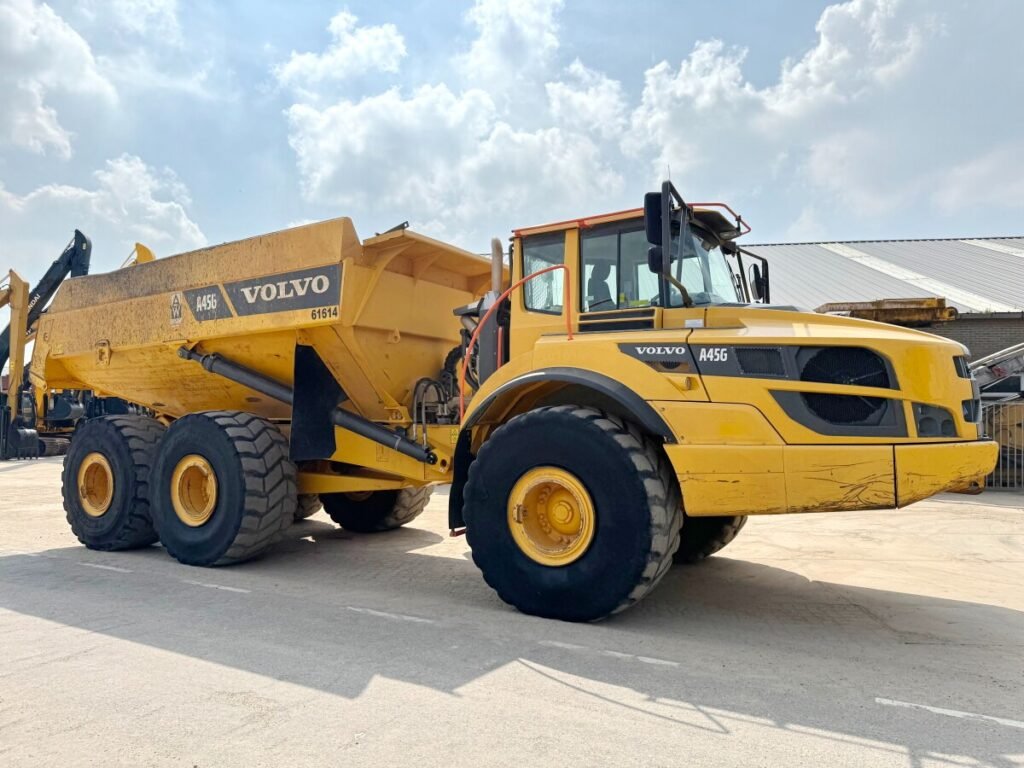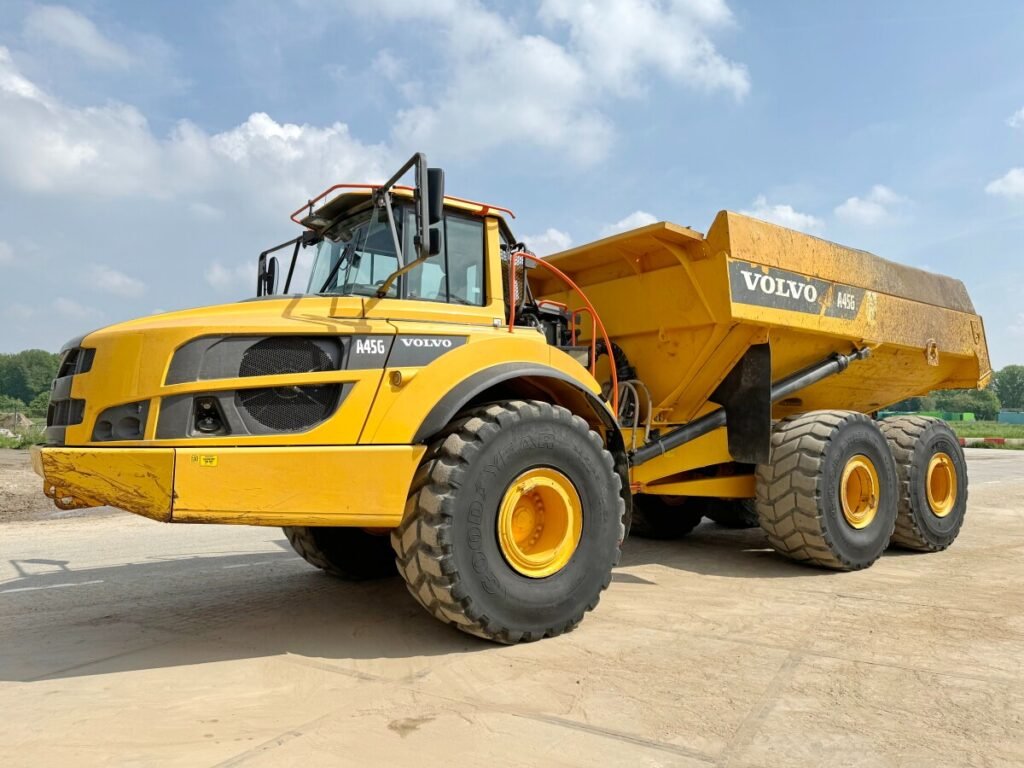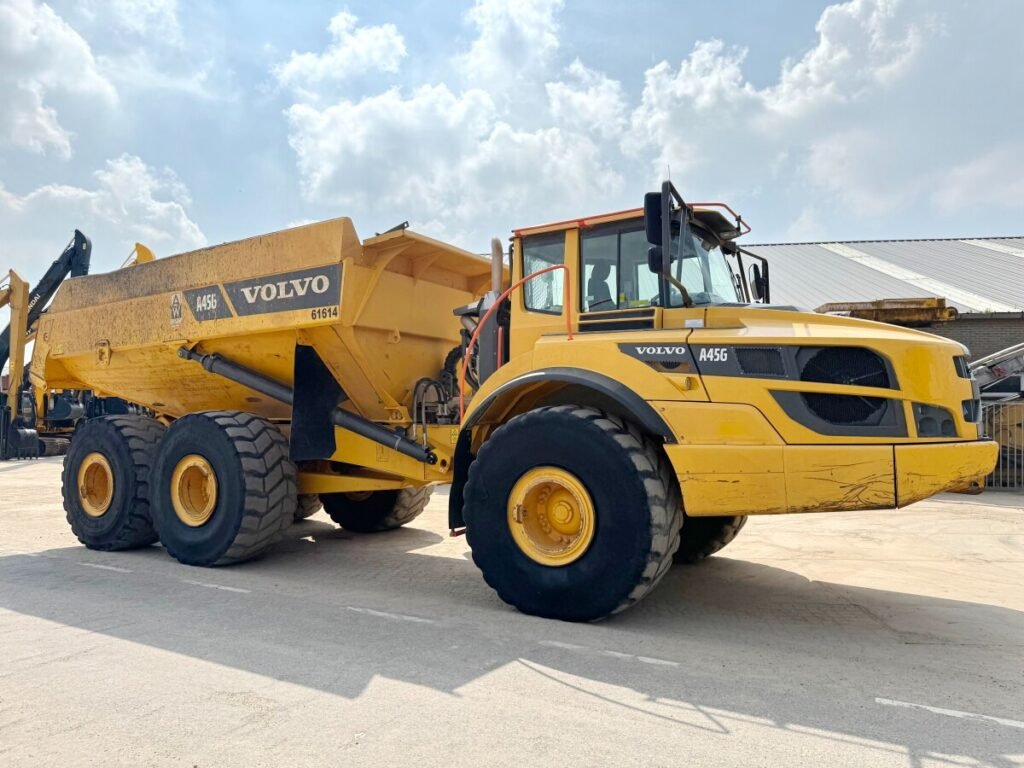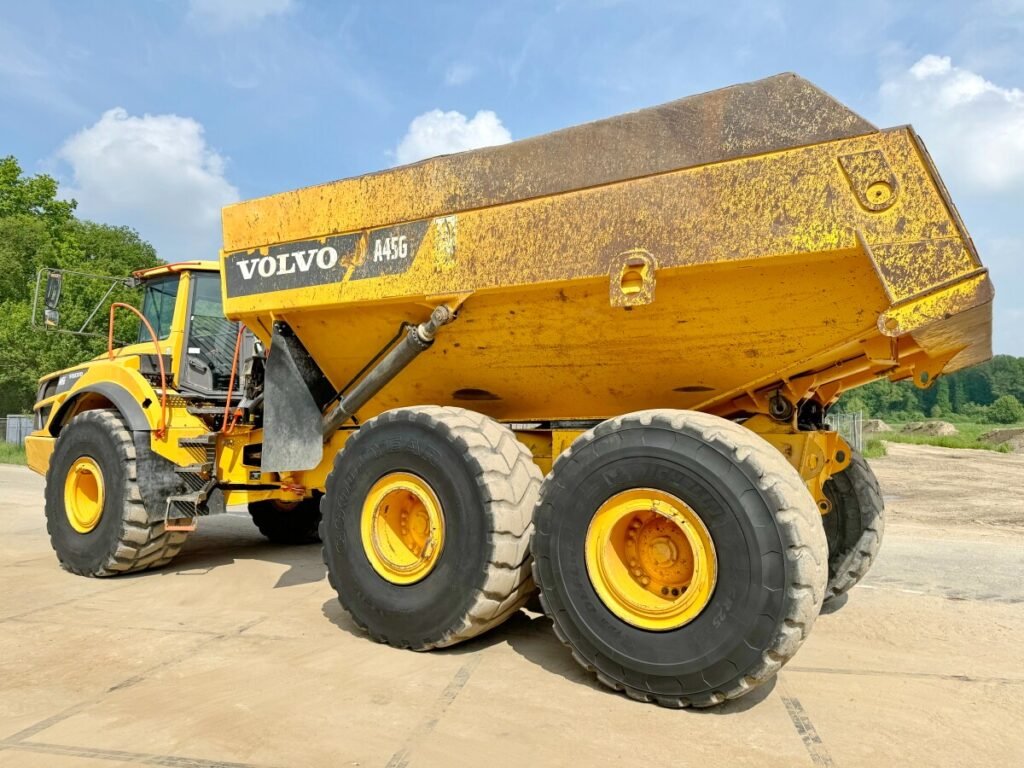Address
304 North Cardinal
St. Dorchester Center, MA 02124
Work Hours
Monday to Friday: 7AM - 7PM
Weekend: 10AM - 5PM
Address
304 North Cardinal
St. Dorchester Center, MA 02124
Work Hours
Monday to Friday: 7AM - 7PM
Weekend: 10AM - 5PM
volvo-a45g-obw-tpms-saudi-heat-2025volvo a45g obw tpms saudion-board weighing a45g ksa, tpms articulated hauler saudi, a45g fuel consumption reduce, a45g tyre temperature, a45g productivity riyadh, a45g jeddah dammam maintenance, iso 20474 maintenance, vat 15% parts ksaA45G OBW & TPMS in Saudi Heat (2025) | Cut $/ton FastUse Volvo A45G On-Board Weighing + TPMS to lower $/ton in Saudi heat. Payload control, tyre temperature, operator coaching, and checklists you can paste into your SOPs.A45G OBW & TPMS — KSA / Exact steps to stabilize fuel, cycle time, and tyre life for the Volvo A45G in Saudi conditions.

Saudi projects are hot, long-cycle, and schedule-driven. Two A45Gs with the same unit price can deliver very different $/ton once they hit the site. The separating line is usually payload discipline and tyre temperature/pressure control. Volvo’s Haul Assist suite—especially On-Board Weighing (OBW) and Tyre Pressure Monitoring System (TPMS)—is purpose-built to solve those exact problems:
Add this to the A45G’s baseline: ~45 short-ton payload (~41 t), ~469 hp (Volvo D16J), ~32.8 yd³ heaped body, ~35.4 mph (57 km/h)—and the machine has all the headroom. You just have to run it right. (Volvo Construction Equipment)
New to the model? See Volvo A45G Specs & Performance (2025) and [A45G FS] if you run rough/temporary roads—Full Suspension keeps travel speed consistent. (Volvo Construction Equipment)

What OBW does: It measures payload in real time and provides a green-zone target. The loader sees external indicator lights so the bucket count hits nominal in 2–3 passes—no guessing, no “one more scoop just in case.” Result: fewer overload spikes, less carry-back, stable cycle time, and predictable fuel/ton. (Volvo Construction Equipment)
Why it matters in KSA: On long, hot hauls, overloading creates heat and slams fuel; underloading trashes your tons/hour. OBW removes both errors. Volvo CE frames it simply: “peak productivity, reduced fuel consumption and less machine wear” when overloading/carry-back are eliminated. (Volvo Construction Equipment)
Operator-visible proof: Haul Assist is integrated across Volvo’s ecosystem; the 2019 launch note underlines payload accuracy to prevent under/overloading. It’s not a gimmick—properly calibrated OBW becomes the site’s metronome. (Volvo Group)
What TPMS does: Shows tyre pressure and temperature live on the display; alerts escalate from under-pressure to high-temperature warnings so operators and service teams act before damage. (Volvo’s monitoring intervals and warning logic are documented across Volvo’s technical collateral.) (Volvo Construction Equipment)
Why it matters: Under-inflated tyres increase rolling resistance, which drives fuel burn up and raises tyre temperature—a vicious loop in hot climates. Technical studies consistently show the link between under-inflation → higher rolling resistance → worse fuel economy. In on-road tests, a 10% increase in rolling resistance can move fuel consumption by ~1–2% depending on cycle; the physics applies off-road too, with site variables. (Mineta Transportation Institute)
Result: Keep tyres in-range and you protect fuel, tonnage, and casing life—and you stop surprise blowouts in August.

A. Calibrate OBW properly
B. Program TPMS thresholds for summer
C. Tyres & TMPH
D. Operator coaching that sticks
E. Road discipline
F. Safety and standards

Yes—often. A45G FS maintains the same payload, power, and body volume as A45G but adds full suspension, which steadies travel speed on rough/temporary roads, reduces spillage and operator fatigue, and can lower $/ton even with a higher purchase price. In long approach legs or newly graded corridors, FS wins more often than buyers expect; we quote A45G vs A45G FS on the same route so you can see the delta. (Volvo Construction Equipment)
Replace ellipses with live numbers; we’ll supply both scenarios in your quote.
Unit: Volvo A45G (or A45G FS), verified; inspection video included
Route (Scenario A): Origin → Jeddah Islamic Port → road to site
Route (Scenario B): Origin → Dammam (King Abdulaziz Port) → Riyadh Dry Port rail → road to site
Cost Lines (both scenarios)
OBW/TPMS Effect (document this on the back page)
Q1. Does OBW really change fuel per ton?
Yes. Overloaded trucks accelerate slower, dump slower, and heat driveline/tyres; underloaded cycles waste trips. OBW removes both, which Volvo documents as reduced fuel consumption and less wear via correct payloading. (Volvo Construction Equipment)
Q2. How is TPMS connected to fuel and tyre life?
Under-inflation increases rolling resistance, which raises fuel use and tyre temperature. Multiple technical studies and databases quantify this effect; the physics holds in off-road duty as well. Real-time TPMS helps keep tyres in range. (Mineta Transportation Institute)
Q3. We work rough, temporary roads. Is A45G FS worth it?
Often, yes. A45G FS (Full Suspension) keeps travel speeds steadier and reduces spillage/fatigue—many fleets see lower $/ton despite a higher sticker. We’ll quote A45G vs A45G FS on the same route so you can compare. (Volvo Construction Equipment)
Q4. Any safety standards we should frame maintenance under?
Use ISO 20474-1 for earth-moving machinery safety across commissioning, operation and maintenance. We map our PM checklists to that backbone. (ISO)
Q5. Will VAT change my OBW/TPMS decision?
VAT (15% standard rate in KSA) applies to parts and services; OBW/TPMS is about reducing operating cost and downtime, so it lowers $/ton regardless. Confirm tax treatment on ZATCA’s VAT portal for your inputs. (ZATCA)